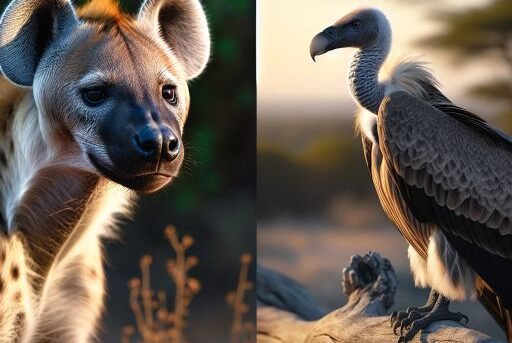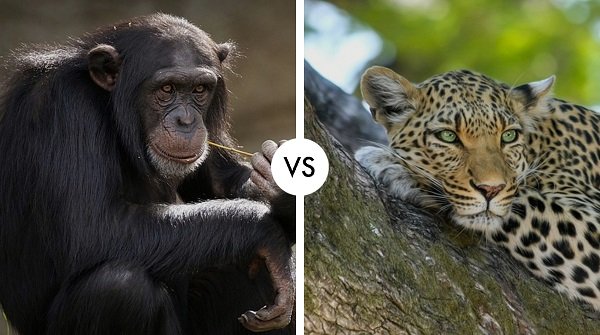Location and Habitat
Hyenas are predominantly found in Africa, particularly in savannahs, grasslands, woodlands, and sub-desert areas, though some species also inhabit parts of Asia. These adaptable animals are skilled hunters and scavengers, often living in large, complex social groups known as clans. Their habitat choice is influenced by the availability of prey and water, and they are known for their ability to thrive in both arid and more fertile regions.
Vultures, on the other hand, have a broader geographical spread, inhabiting continents such as Africa, Asia, Europe, and the Americas. These birds are primarily scavengers, playing a crucial ecological role in their environments by consuming carrion and thus preventing the spread of disease. Depending on the species, vultures can be found in diverse habitats ranging from open plains and savannahs to mountains and desert regions. Their presence in these ecosystems is vital for maintaining ecological balance.
Hyena vs. Vulture Comparison
| Attribute | Hyena | Vulture |
|---|---|---|
| Size and Weight | Length: 95-150 cm, Weight: 40-86 kg | Wingspan: 160-240 cm, Weight: 0.85-2.2 kg |
| Ability to Finish Opponent | Strong bite force, can crush bones | Primarily scavengers, less aggressive |
| Weaponry | Powerful jaws and teeth | Sharp beak and talons |
Hyenas and Vultures: A Complex Relationship
Across the vast landscapes of Africa, two essential scavengers play a critical role: the hyena, often portrayed as a cackling opportunist, and the vulture, nature’s tireless sanitation crew. While hyenas are indeed formidable hunters, their social structure is what truly sets them apart. Female hyenas reign supreme within their clans, boasting powerful jaws that can crush bone with incredible force. Vultures, on the other hand, soar through the skies with impressive wingspans, their keen sense of smell acting as a long-distance carrion detector.
Hunters and Cleanup Crew: A Symbiotic Dance
Hyenas are not just scavengers; they are also skilled hunters, taking down prey like wildebeest and antelope. Their pack tactics allow them to tackle larger animals, and they’re known to chase off even lions from a hard-earned kill. Vultures, on the other hand, primarily rely on deceased animals for sustenance. Their remarkable eyesight allows them to spot carrion from miles away, even when hidden amongst tall grass.
However, the relationship between hyenas and vultures goes beyond mere competition. In a fascinating twist, vultures can act as scouts for hyenas, leading them to fresh carcasses. Hyenas, with their powerful jaws, can then break open tough hides that vultures cannot penetrate, making the meal accessible for both. This symbiotic dynamic exemplifies the delicate balance within the African ecosystem.
Beyond the Carcass: Threats and Significance
Despite their vital roles, both hyenas and vultures face significant threats. Habitat loss due to human encroachment and agricultural expansion disrupts their natural hunting grounds and feeding opportunities. Vultures, in particular, are susceptible to poisoning from carcasses laced with pesticides used to kill agricultural pests.
Conservation efforts are crucial to protect these remarkable creatures. Organizations work to raise awareness about their importance, advocate for habitat preservation, and implement anti-poisoning measures.
More Than Just Scavengers: A Cultural Tapestry
Hyenas and vultures often carry negative connotations, but their cultural significance in Africa is multifaceted. Some cultures view hyenas as symbols of strength and resilience, while vultures are seen as harbingers of death or rebirth. Understanding these complex roles and the threats they face fosters a deeper appreciation for the intricate web of life in Africa.
Who Would Win
Winner: Hyena, with an 95% chance of winning.




